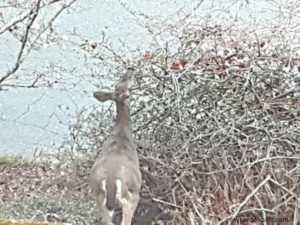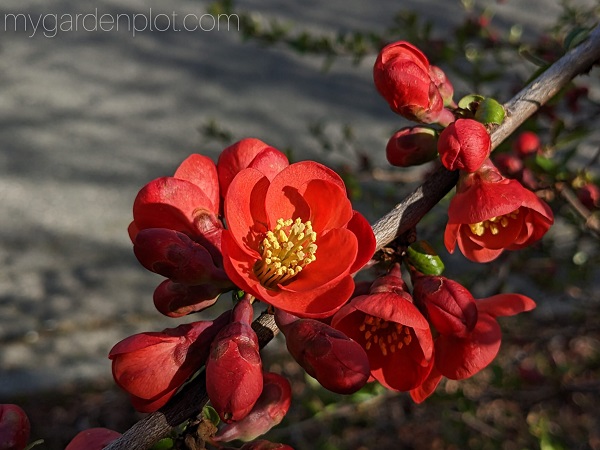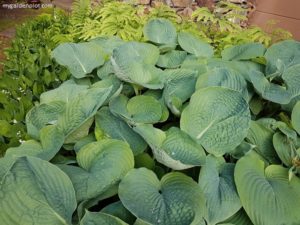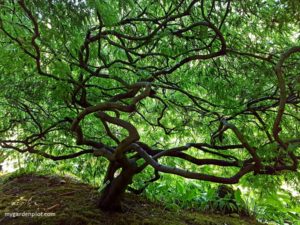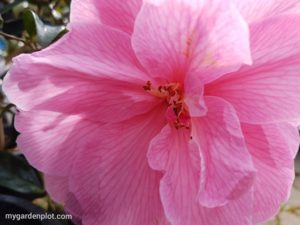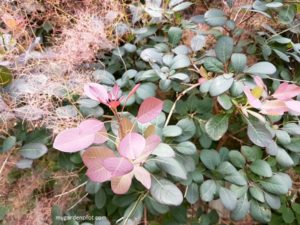About Chaenomeles japonica: Flowering Quince, Japanese Quince
A thorny, ornamental shrub, the Chaenomeles (flowering quince or Japanese quince) may not be the first choice for new gardeners. But this deciduous shrub is a reliable favourite. Its thorny and dense branches are balanced with a lovely spring bloom in February and March. And can continue to bloom until April or later. These early spring flowers bloom on bare branches. The blossoms are bowl-shaped up to about 5 cm (2 in) wide, with colours that range in pinks, red, orange and white. In Fall, the flowering quince produces fragrant but tart edible fruit.
This adaptable and popular early-flowering shrub originates from China and Japan, and is related to the rose. It is also known as Maule’s quince and Japanese quince.
Flowering Quince At A Glance
Type: Deciduous shrub
Location: Full sun / part sun
Blooming season: Spring
Height and spread (depends on species and variety): from 1 x 1.2 m (3 x 4 ft) to 3 x 5 m (10 x 16 ft)
Plant Hardiness Zones: 4, 5, 6, 7, 8, 9
Where to Plant And How to Care
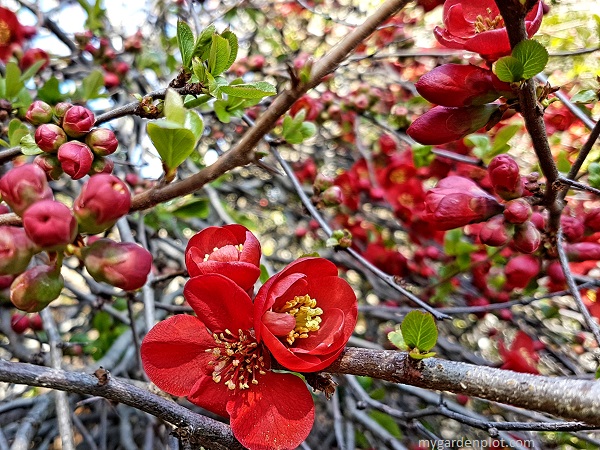
How To Prune Flowering Quince
Little pruning is required. However, it can sometimes get a little crowded as it ages. Armed with thorn-proof gloves, a little remedial pruning may be required. The flowering quince can tolerate pruning up to one-third of the shrub down to within about 15 cm (6 in) off the ground. Otherwise, little, light pruning in late spring or early summer encourages new growth and flowers for the next year.
RELATED TOPIC: Buyer’s Guide On How To Choose Hand Pruners (Secateurs)
Tools Needed For Pruning Flowering Quince
Below is the list of essential tools needed to prune a flowering quince shrub. A must have is a good pair of thorn-proof gloves. Mature shrubs can get congested when neglected and those thorns are sharp.
- Pruners – Bypass pruners are the most popular choice for gardeners and a must in a pruner’s tool kit. Bypass means the blades pass each other in a scissorlike action providing a clean cut without splintering the stem edge. The anvil-type pruner, where the upper blade cuts against a lower flat edge, must always be kept sharp. Otherwise, it will crush the stem while trying to cut it.
- Long-handled Loppers – Similar to pruners, loppers are heavy-duty pruners but with longer handles. Needed for those harder to reach stems that may also have thicker stems that could damage a pruner.
- Pruning Saw – Saws are useful for thick stems that are growing close together. A Grecian saw or Japanese-blade pruning saw is a handsaw with a curved or straight edge that works with a pull-stroke action. Great for those stems that pruners and loppers can’t cut.
- Thorn-proof Gloves – Thorn-proof gloves that extend up the arm are a must when pruning a thorny flowering quince.
RELATED TOPIC: Buyer’s Guide On How To Choose A Pruning Saw
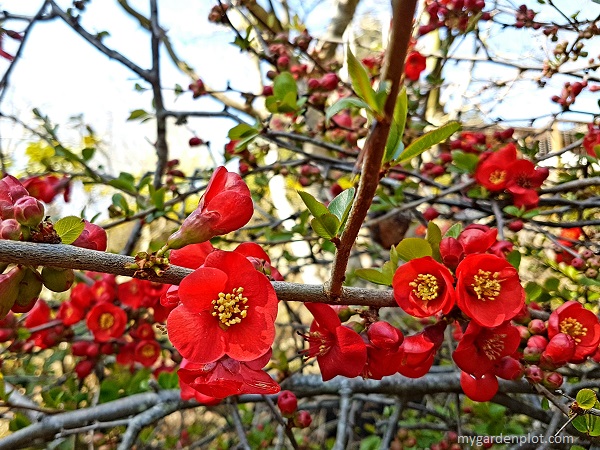
About being Deer Resistant...
Time and time again, I hear how the flowering quince is deer resistant. Ours isn’t. Soon after it blooms, I find a deer enjoying them too. Perhaps the flowering quince is deer resistant in some parts of the world; or perhaps the deer we have in Victoria BC have a more “refined” palette? Who knows! What I know is they do seem to enjoy flowering quince.
But the thorns do seem to limit where the deer goes, and as our flowering quince is planted on an embankment, we enjoy the flowers from above where the deer cannot get to. We are happy to share with deer – just this once.
